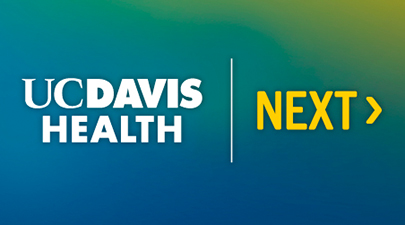What it’s like to work in an outpatient surgery center
Scheduled to open in July 2025, the 48X outpatient surgery center will offer patients high-quality surgical services in a modern outpatient setting. The building is an important part of UC Davis Health’s strategy to envision the care of the future.
In a recent meeting, physicians discussed what to expect at 48X. In addition to an update on the plans and progress of the construction project, each panelist shared their personal experience working in an ambulatory surgery center (ASC).
“48X is going to need a whole new culture to function efficiently and effectively, in order to meet the needs of the patients as well as the staff,” said Hospital Chief Medical Officer Joseph Galante, who hosted the meeting.
Meet the other physicians who spoke on the panel:
- Puya Hosseini, Department of Anesthesia and Pain Medicine
- Safdar Khan, Department of Orthopedic Surgery – Spine surgery
- Richard Price, Department of Neurological Surgery – Spine surgery
- Ankit Sarin, Department of Surgery – Colorectal surgery
- Anna Wertz, Department of Otolaryngology – Head and neck surgery
Learn about their expectations and advice for preparing to work at one of the largest outpatient surgery centers in the country.

From your experience in an ambulatory surgery center, what is the key factor that made it work most efficiently?
Price: The key to a successful ASC is efficiency. The cases you select should be ones you are efficient at doing, not trying new stuff or new implants. For me, just doing a one- or two-level anterior cervical discectomy and fusion (ACDF) so I can predictably know exactly how long it's going to take, efficiently plan my day and let the staff know.
Sarin: We've never had an OR that actually closes at night. You have to build a culture where the thought is: ‘We've got to finish to get done and out of here.’
Khan: I echo everything that has been said about efficiency and personnel and culture. But also entering this with a growth mindset: that there are changes, and we're going to embrace these changes. I think that is a big part of what makes things successful.
What strategies did you use at an ASC that you may not have needed in other clinical environments?
Wertz: How we are successful in ambulatory surgery centers is volume. Repeatable, predictable cases and repeatable, predictable surgeons.
I think picking your patients appropriately and doing the cases you know how to do very well is important for succeeding."—Richard Price, M.D., Department of Neurological Surgery
Price: I would try to strategize my days. I'd have my ACDF day, then I'd have my tubes day, where I was just doing decompressions. As far as patient selection, I relied heavily on enhanced recovery after surgery (ERAS) protocols. I think picking your patients appropriately and doing the cases you know how to do very well is important for succeeding.
Khan: It’s like a Formula 1 pitstop. Our microscope and other enabling technologies are all in the same place every day. Little things like that make a huge difference to turnover and intraoperative decision making. I think that set us up for rapid turnover and high-value volume surgery.
How did your centers predict case length when scheduling the day? What if you’re running behind?
Khan: It’s a constant check. Surgeons and our colleagues in anesthesia and our colleagues in administration, nursing colleagues — all of us sit together. If a breakdown occurred, what got us back on track was everyone talking, everyone being open, not having hierarchies. Let's problem solve with an open growth mindset and try to succeed that way.
Hosseini: When you have repeatability and predictability, you're able to tailor your anesthetic to line up with the surgical timing and ability. The more cases we do, the more we work together, the more we get to know each other, the finer that gets.
What was the expectation of your availability as a surgeon?
Khan: As a surgeon, we're constantly available and constantly visible. That's a big part of ASC success. Checks in with the front desk, checks in with the nursing staff, checks in with our anesthesia colleagues, checks in with the PACU.
Sarin: The surgeon needs to be in the room when the patient gets there. And the surgeon drives the efficiency. We are able to see things going in series when they should be going in parallel. For example, if an IV is being put in, you can still position the patient and put in a Foley at the same time. That's the kind of stuff that a surgeon can drive.
Price: It sounds a bit hokey, but I think the successful teams were set surgical teams with a surgeon-driven leader who was able to communicate well, clearly, directly, who selected patients that were very specific for this type of environment, and who knew the operating cost of the overall endeavor.
Wertz: Culture comes from the top, and in the OR that’s the surgeon. You're physically present and you're helping the nurse; if they're putting on sequential compression devices (SCDs), you're putting on SCDs with them. It’s all hands on deck to make it work efficiently.






